Vrindavan, located on the banks of the sacred Yamuna River in Uttar Pradesh, India, is one of the most revered pilgrimage destinations for Hindus. Known as the land of Lord Krishna’s childhood and divine pastimes, Vrindavan holds immense spiritual significance. Every corner of this holy town echoes the stories of Krishna’s love, devotion, and miracles. The temples, ghats, and streets of Vrindavan attract millions of devotees and tourists from all over the world. Below are the top 10 places you must visit in Vrindavan.
1. Banke Bihari Temple
The Banke Bihari Temple is the heart of Vrindavan and one of the most popular temples dedicated to Lord Krishna. Built in 1864 by Swami Haridas, the guru of famous musician Tansen, this temple enshrines the idol of Lord Krishna in his “Banke Bihari” form — meaning “bent in three places.” Unlike most temples, there are no bells or conches inside, as it is believed that Krishna prefers a peaceful environment. The temple is especially crowded during Janmashtami and Holi, when thousands of devotees come to seek the blessings of Lord Krishna.
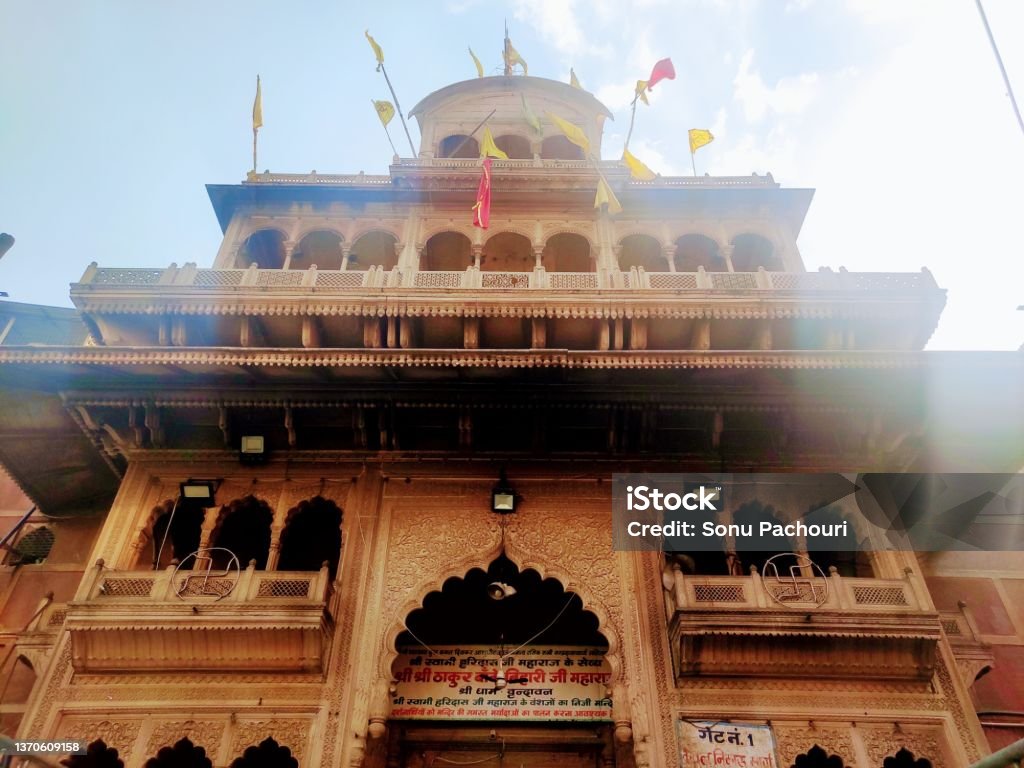
2. ISKCON Temple (Sri Krishna-Balaram Mandir)
The ISKCON Temple, also known as Sri Krishna-Balaram Mandir, was established by A.C. Bhaktivedanta Swami Prabhupada in 1975. It is one of the cleanest and best-maintained temples in Vrindavan. The temple’s main deities are Lord Krishna and his brother Balaram, with Radha-Shyamasundar and Gaura-Nitai also worshipped here. The temple complex includes a museum, guest houses, and a vegetarian restaurant. The evening aarti with devotional songs and dancing is a must-experience event for every visitor.
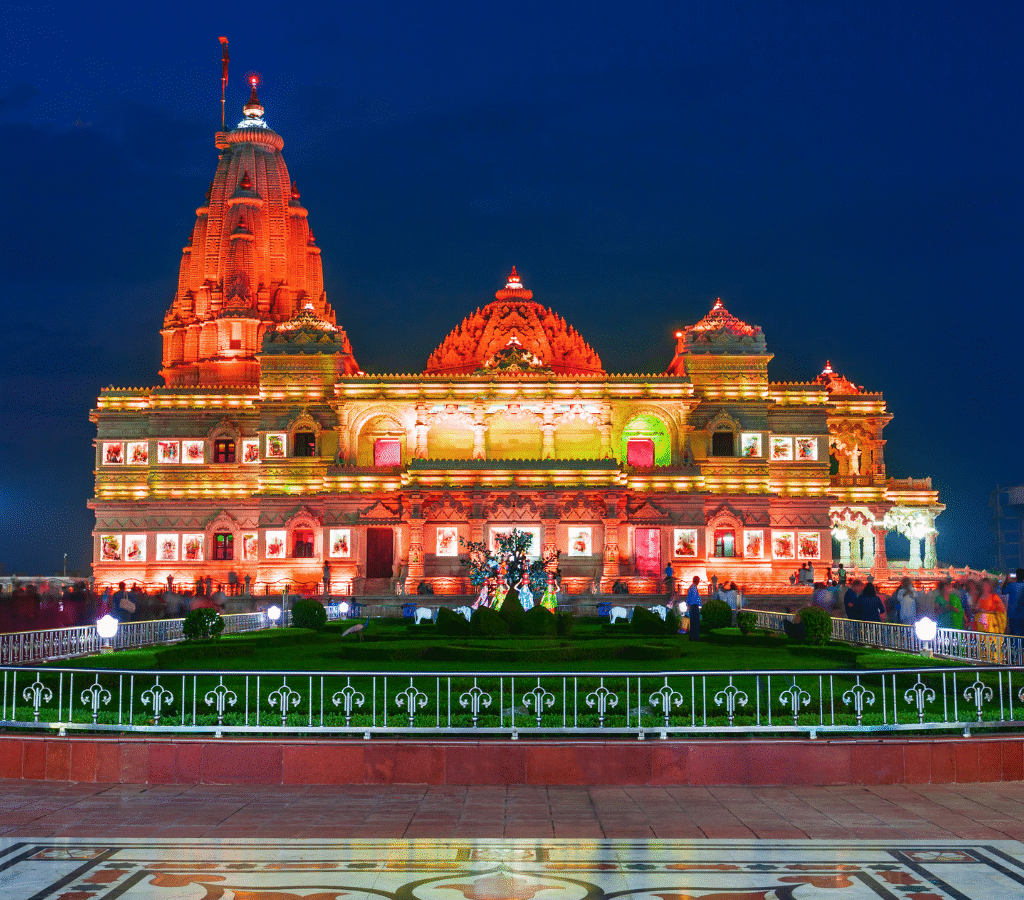
3. Prem Mandir
The Prem Mandir, built by Jagadguru Kripalu Maharaj, is one of the most beautiful and modern temples in Vrindavan. Made entirely of white Italian marble, it is adorned with intricate carvings depicting the divine pastimes of Radha and Krishna. The temple looks breathtaking at night when it is illuminated with colorful lights. The surrounding gardens and fountains add to its charm. The musical fountain show in the evening attracts tourists and locals alike, making it one of Vrindavan’s most visited attractions.
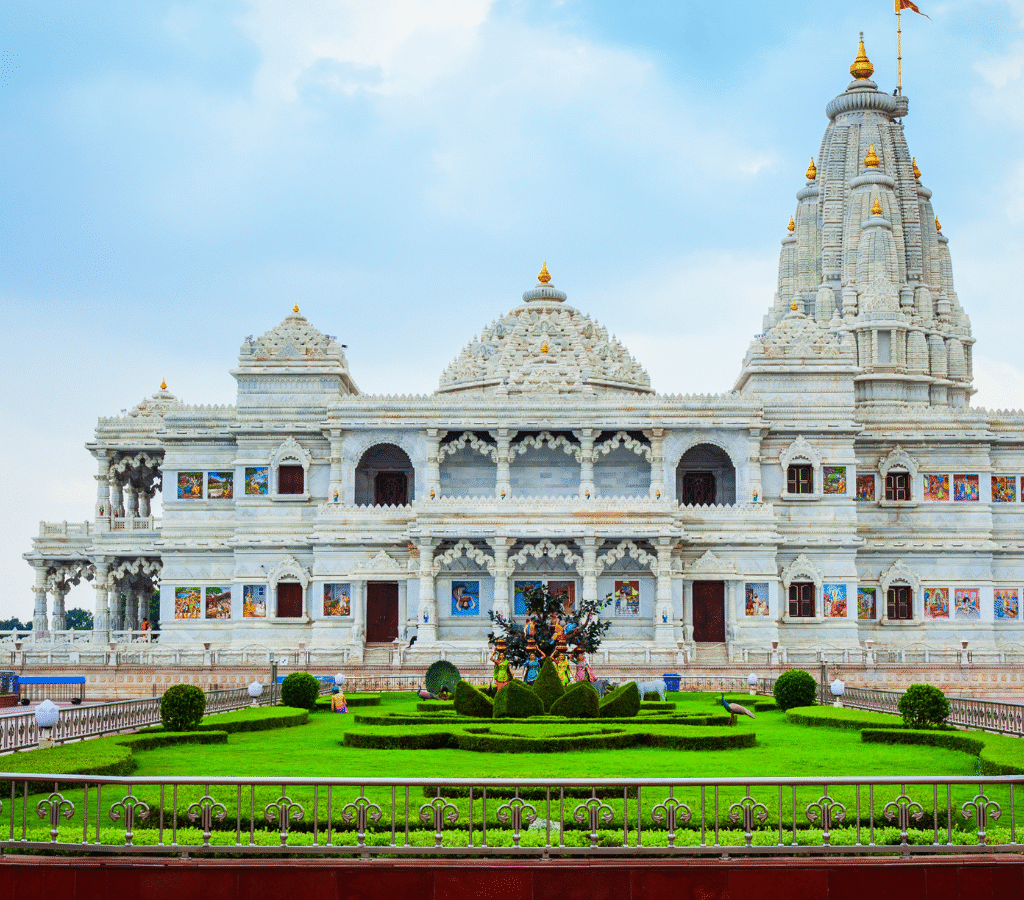
4. Radha Raman Temple
The Radha Raman Temple is one of the oldest temples in Vrindavan and holds great religious importance. It was established by Gopala Bhatta Goswami, one of the six Goswamis of Vrindavan, in 1542. The temple houses the self-manifested (Swayambhu) idol of Lord Krishna, which is believed to have appeared miraculously from a Shaligram Shila (sacred stone). The temple’s atmosphere is peaceful and spiritually uplifting, attracting devotees seeking divine blessings and a glimpse of Krishna’s eternal beauty.
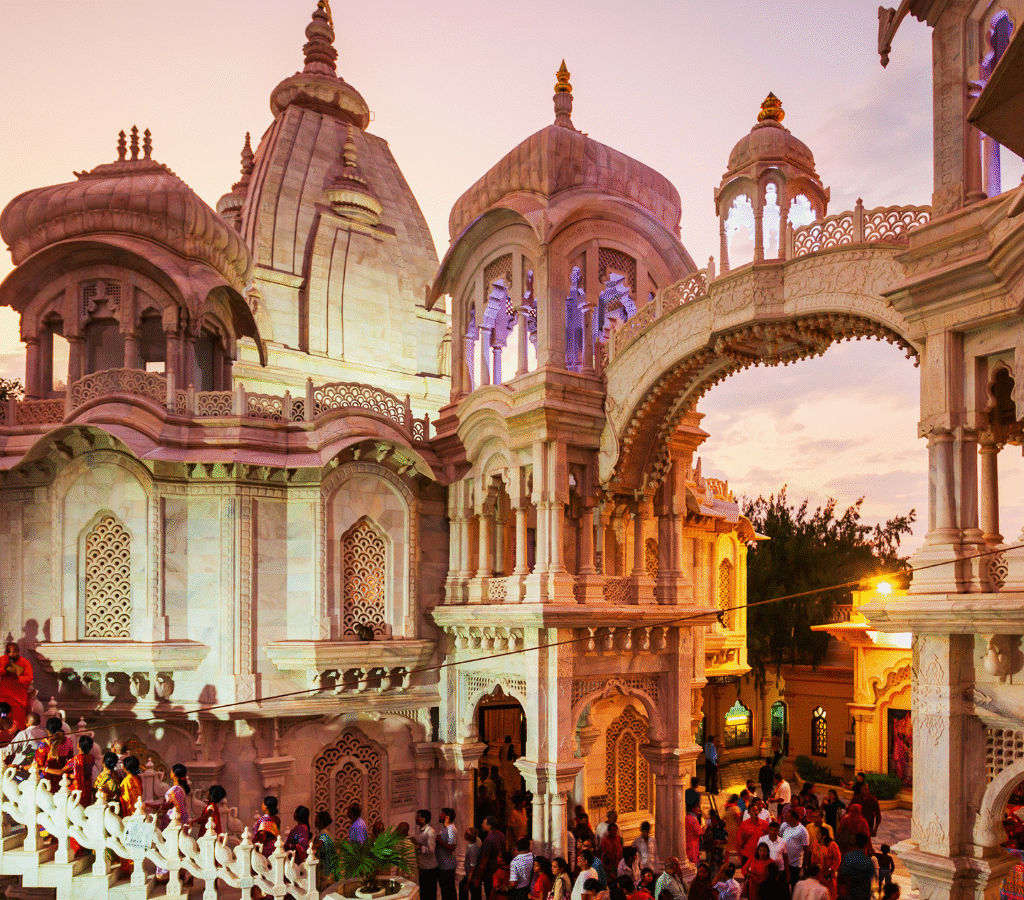
5. Nidhivan
Nidhivan is one of the most mysterious and sacred places in Vrindavan. It is believed to be the spot where Lord Krishna performs the Raas Leela with Radha and the Gopis every night. The area is densely covered with Tulsi trees that appear twisted in pairs, symbolizing Radha and Krishna’s divine dance. No one is allowed to stay in Nidhivan after sunset, as it is said that any person who tries to witness the Raas Leela either loses their senses or dies. This mystical aura makes Nidhivan a place of deep faith and wonder.
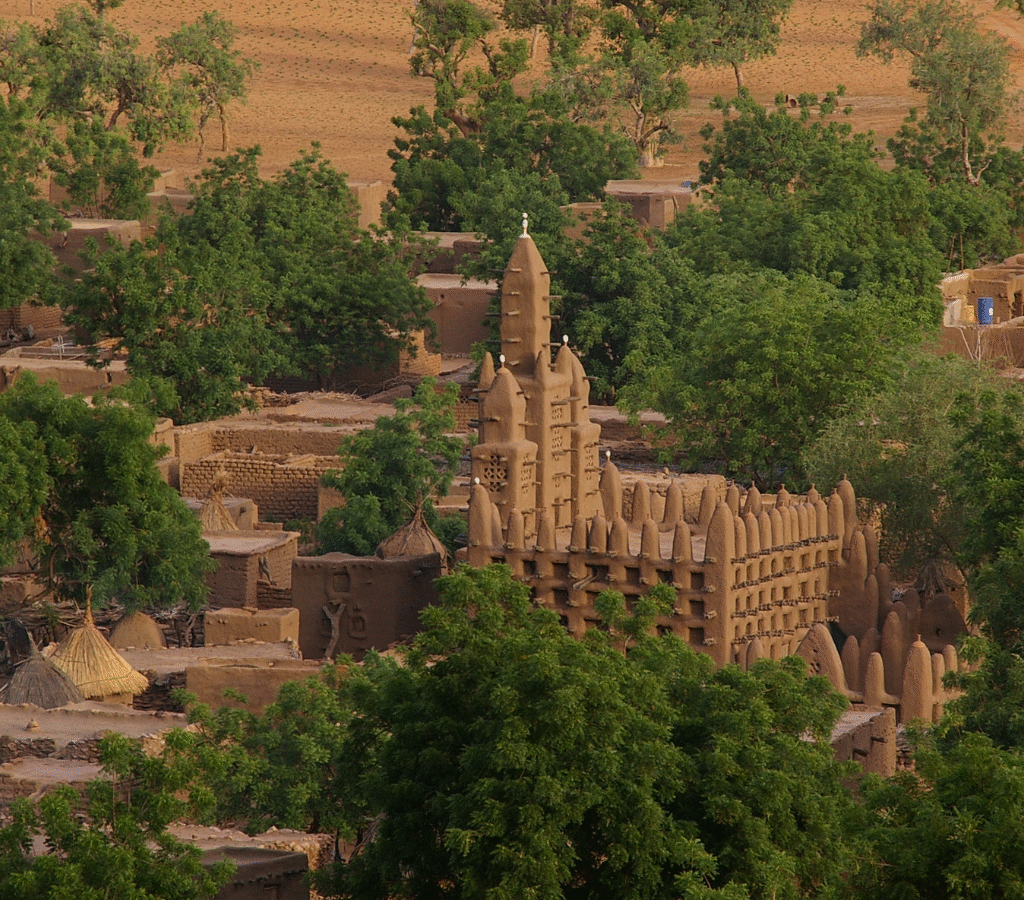
6. Seva Kunj and Rang Mahal
Located close to Nidhivan, Seva Kunj is another sacred garden where Lord Krishna is believed to have served Radha by decorating her hair and feet. The Rang Mahal, within Seva Kunj, is said to be the place where Radha and Krishna spent time together in loving pastimes. The walls of Rang Mahal are beautifully painted with scenes from Krishna’s life. The atmosphere here is calm and meditative, making it a perfect spot for devotees to connect with divine love.
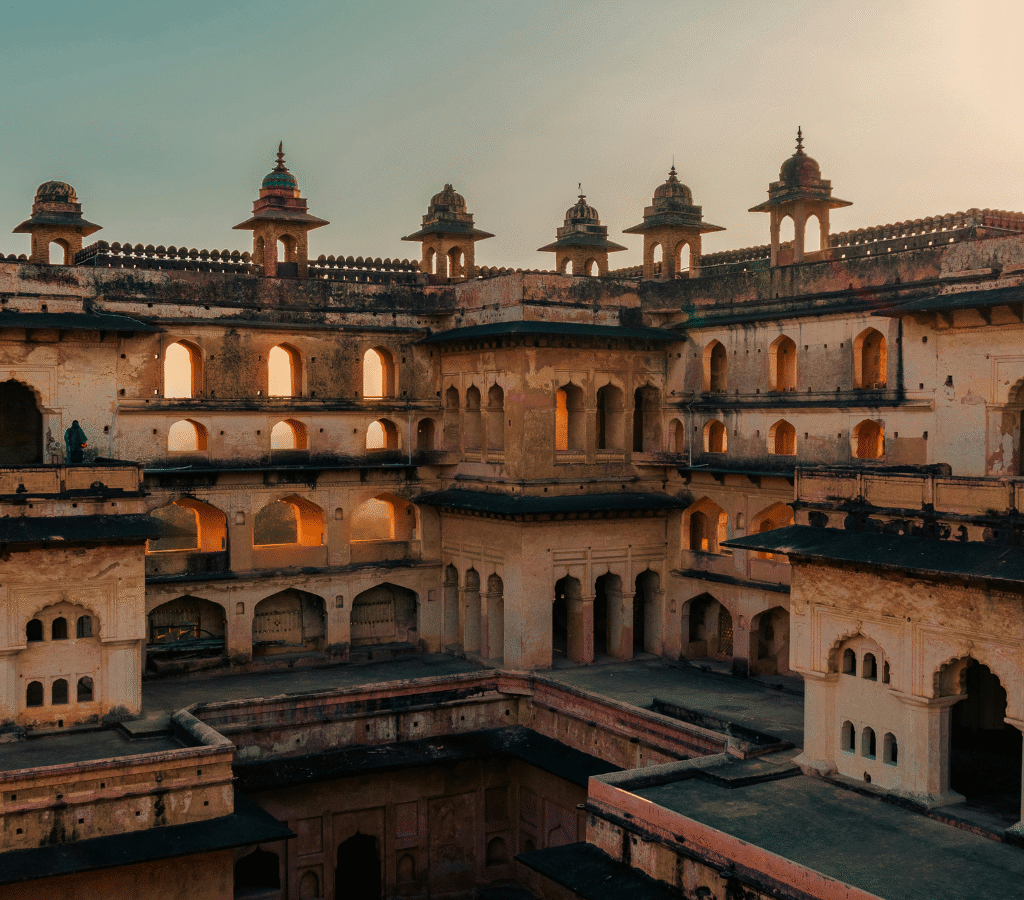
7. Govind Dev Ji Temple
The Govind Dev Ji Temple is one of the most remarkable architectural wonders of Vrindavan. It was built in 1590 by Raja Man Singh of Amber (Jaipur) using red sandstone, making it stand out among other temples. The temple was originally seven stories tall but was partially destroyed during the Mughal era. Even today, its remaining three stories reflect the grandeur and devotion of the time. The temple was dedicated to Govind Dev Ji, a form of Lord Krishna, and remains a symbol of devotion and artistry.
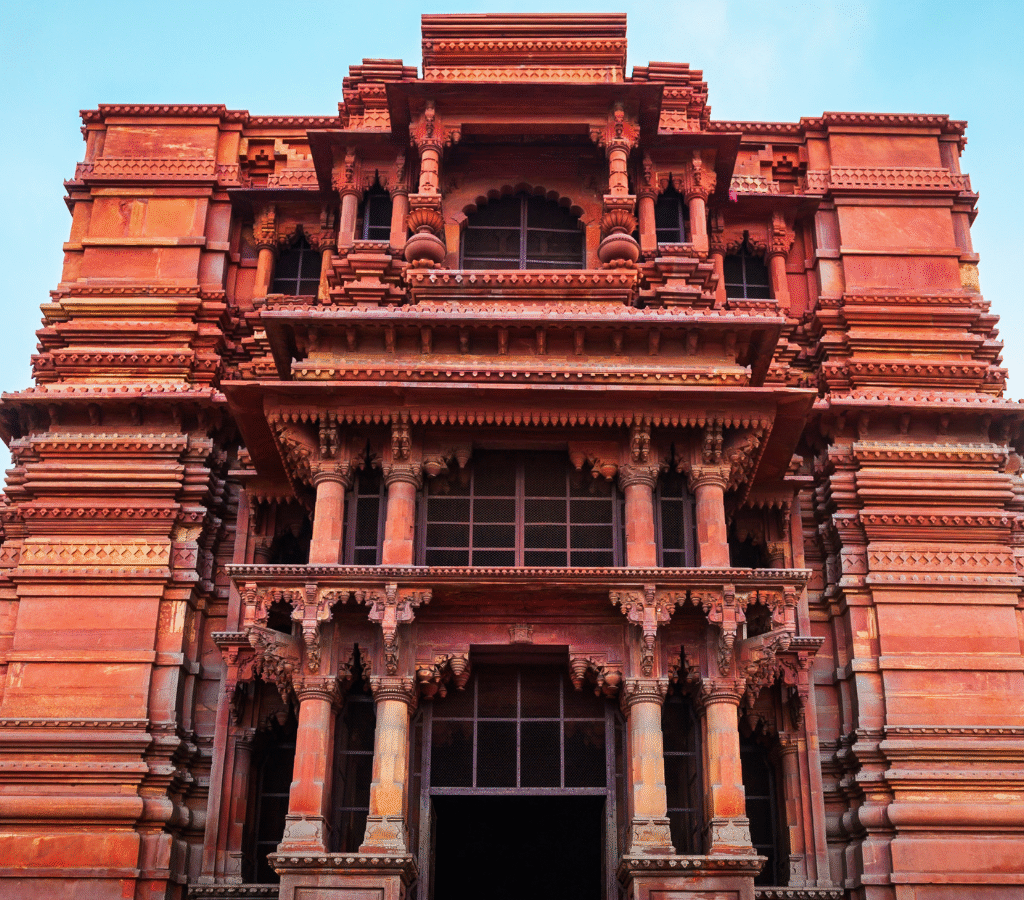
8. Shri Rangnath Ji Temple
The Rangnath Ji Temple, also known as the Ranganath Temple, is a magnificent example of South Indian architecture in North India. It is dedicated to Lord Ranganatha, a form of Lord Vishnu resting on the serpent Adishesha. The temple has tall gopurams (towers) and beautiful carvings. During the Brahmotsav festival, the temple comes alive with colorful decorations, rituals, and cultural programs. This temple represents the unity of different traditions of Hinduism within Vrindavan’s spiritual landscape.
9. Keshi Ghat
The Keshi Ghat is one of the most sacred ghats on the banks of the Yamuna River. According to mythology, this is the place where Lord Krishna killed the demon Keshi, who came in the form of a horse to attack him. The ghat’s architecture is stunning, especially at sunrise and sunset when the golden rays reflect on the Yamuna’s surface. Devotees perform Yamuna aarti here every evening, offering lamps and flowers to the sacred river. A boat ride from Keshi Ghat during dawn or dusk provides a serene spiritual experience.
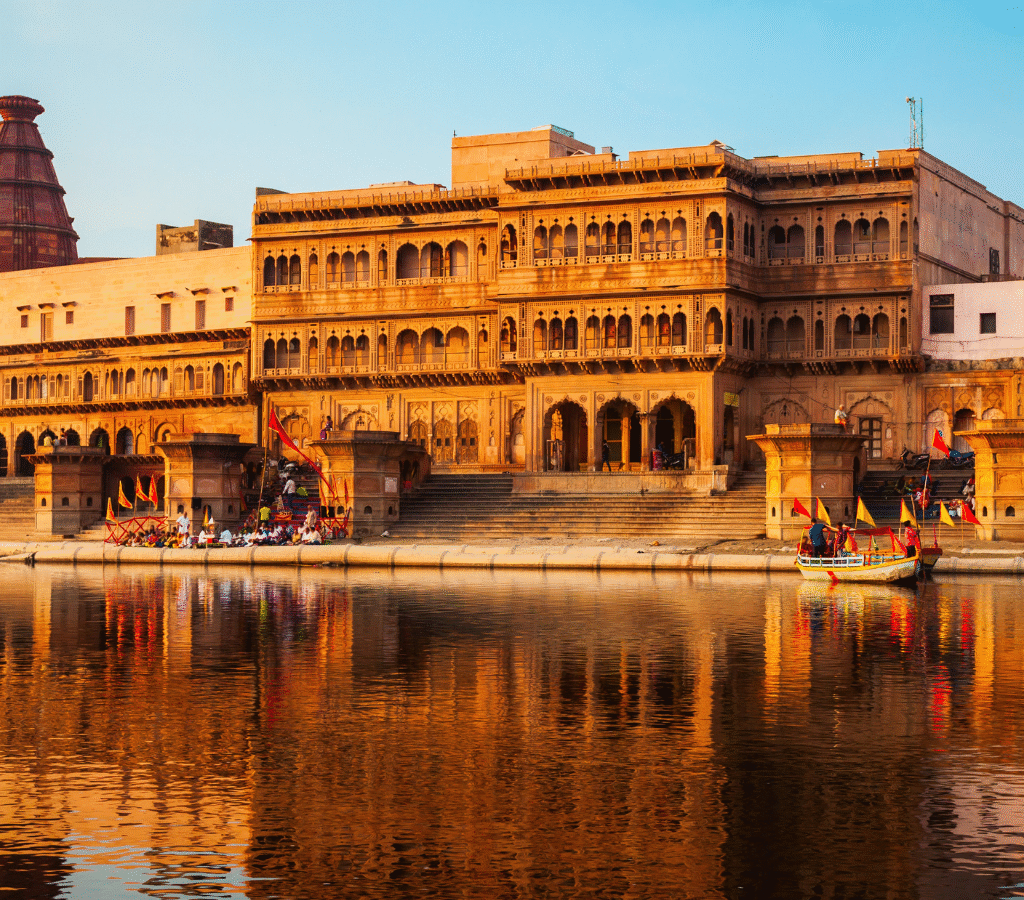
10. Madan Mohan Temple
The Madan Mohan Temple, located near the Kali Ghat, is one of Vrindavan’s oldest temples and holds great historical and religious value. Built by Kapur Ram Das of Multan and established by Sanatan Goswami, it enshrines the deity of Madan Mohan, a form of Lord Krishna symbolizing love. The temple’s simplicity and location on a small hill offer a panoramic view of the Yamuna River and the surrounding town. It is a perfect place for meditation and reflection.
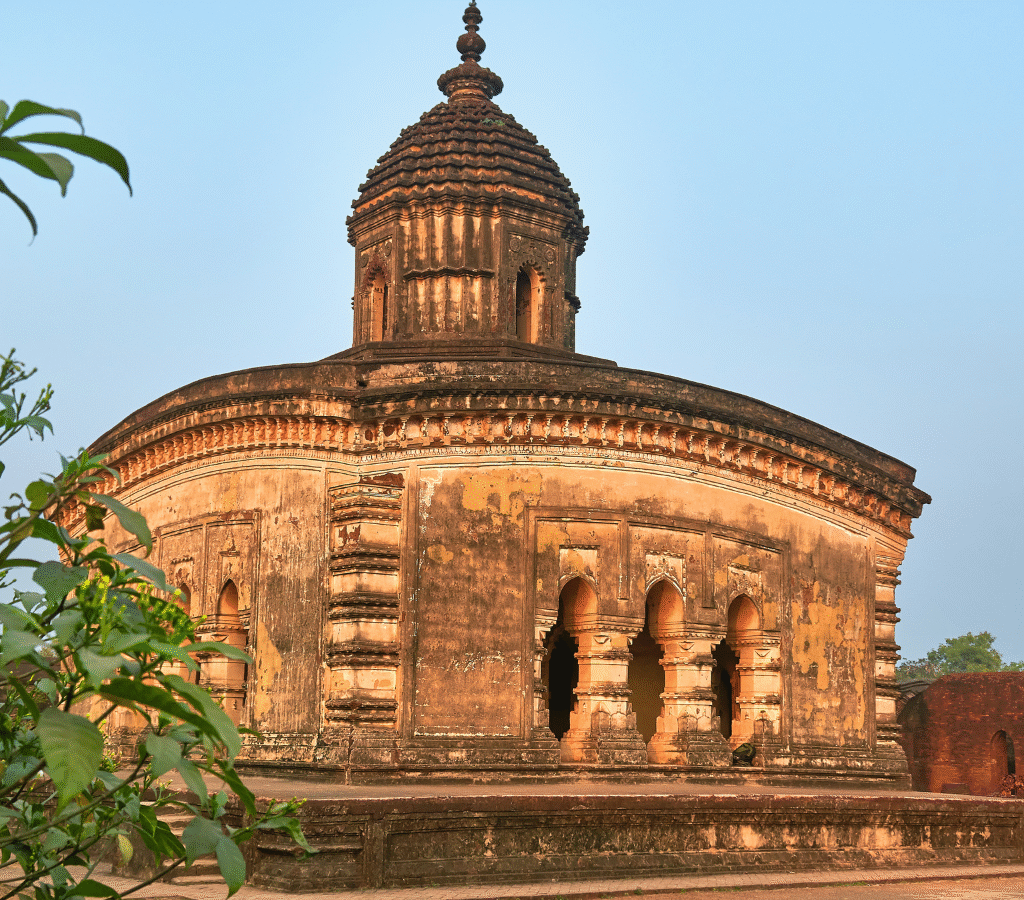
Conclusion
Vrindavan is not just a town; it is a divine experience that fills the heart with love, peace, and devotion. Every temple, ghat, and street carries the fragrance of Krishna’s leelas (divine plays). Whether you are a spiritual seeker or a traveler interested in culture and heritage, Vrindavan offers a unique blend of devotion, art, and history. From the enchanting chants of “Radhe Radhe” to the mesmerizing beauty of its temples, Vrindavan truly captures the essence of divine love.
